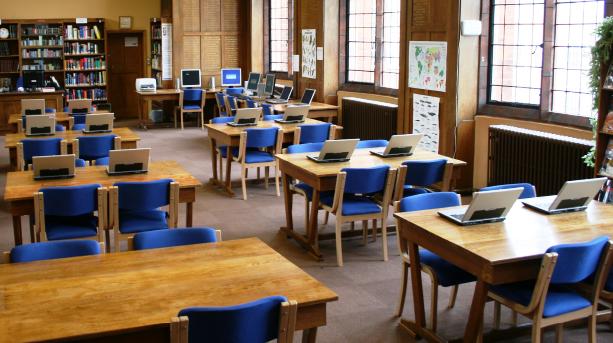York school virtualises desktops
Bootham School in York has started to switch its 300 desktop and laptop machines to thin client terminals from HP in order to save cash and improve IT.


Virtualised thin client terminals are often seen as an enterprise alternative, but a school in York is using such tech to cut costs, noise and power usage.
Bootham School in York - an independent Quaker institution - has some 600 students between its two campuses, using 300 computers on HP's ProCurve networks for wireless access.
"IT use at the school is increasing year-on-year," said Steven Wright, Bootham's IT manager. While it improves teaching in some ways, it creates other challenges, he explained.
Teaching areas, stuffed with computers, were getting hotter and noisier. Students were losing valuable lesson time waiting for computers to boot up. And the school's three-year refresh cycle was simply too expensive.
With that in mind when Wright joined the school in 2005, he started looking for alternatives, eventually turning to a virtualised thin client solution from HP.
The system began rolling out a year ago, with a third of the school's computers now thin client terminals. Bootham will roll out another third this year, and the remaining third the next, keeping with the school's annual refresh budget.
Because the HP terminals have fewer moving parts, they need to be replaced every five years, saving Bootham two years on its refresh cycle -worth as much as 100,000 in efficiencies. "When we finish the rest of virtualisation, just on hardware we should save 100,000," he said.
Sign up today and you will receive a free copy of our Future Focus 2025 report - the leading guidance on AI, cybersecurity and other IT challenges as per 700+ senior executives
The lack of hard drives and fans in the terminals also cuts down on noise and heat, Wright said, improving the teaching environment. "No fans, no hard drive, no moving parts... it's as if the machines are not there," said Wright.
The systems also help with the school's power consumption and carbon footprint, as the terminals use just 25 watts of power, far lower than standard desktops at as much as 250 watts. As well, when using thin client laptops, the battery lasts as long as six or seven hours.
Because startup is quicker, students can get to work that much faster. "We don't want people to be spending five minutes to bootup... the new ones take two minutes," Wright explained.
As the system is server-based, it's also much simpler to redeploy terminals and switch them from subject to subject - an especially sweet bonus given the school's IT department consists of Wright and just two others. "Rolling out this technology on a small scale was very easy to do," he said.
"Steven [Wright] has been able to achieve these savings with three staff and a typical British school budget," said Jim Campbell, market development manager for client virtualisation at HP EMEA. "If he can achieve it, it's replicable elsewhere."
There have been some troubles however. When students try to play flash games, errors have occurred. "Students are disgruntled they can't run games anymore, but it isn't for that," Wright said.
The school has also had initial problems using multimedia - a subject the school prides itself on teaching its students. Video and sound would go out of sync. The problem has since been solved using HP's Remote Graphics Software linking tool, which now lets IT stream even full-length DVDs over the system.
The school is also looking into setting up a fast fibre link to a data centre, to allow staff and students to access materials away from the school. Wright also plans to make use of HP's blade PCs, where each PC is linked to its own blade in the backend, rather than just have terminals connect into the server.
Freelance journalist Nicole Kobie first started writing for ITPro in 2007, with bylines in New Scientist, Wired, PC Pro and many more.
Nicole the author of a book about the history of technology, The Long History of the Future.
-
 Trump's AI executive order could leave US in a 'regulatory vacuum'
Trump's AI executive order could leave US in a 'regulatory vacuum'News Citing a "patchwork of 50 different regulatory regimes" and "ideological bias", President Trump wants rules to be set at a federal level
-
 TPUs: Google's home advantage
TPUs: Google's home advantageITPro Podcast How does TPU v7 stack up against Nvidia's latest chips – and can Google scale AI using only its own supply?
